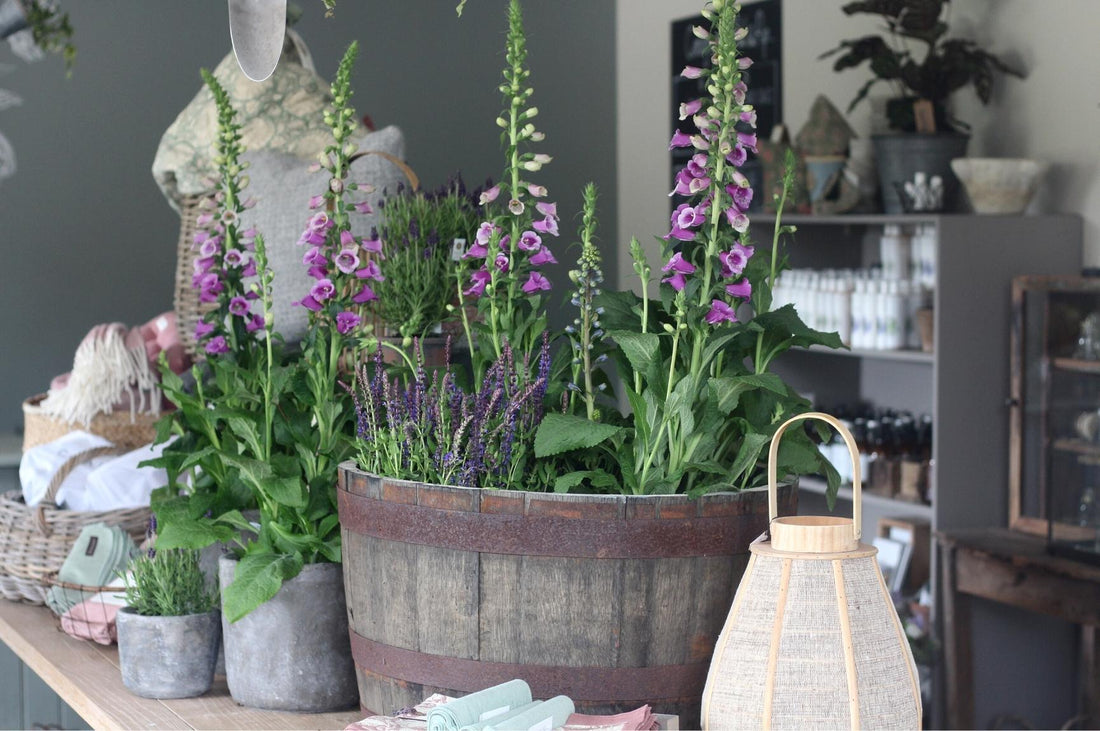
Foxgloves - A Cottage Garden Favourite
Share
Foxgloves - A Cottage Garden Favourite
A favourite cottage garden flower, foxgloves are seeing towering high in flower beds ideal for giving height and colour to the back of a border. They are partial to more shaded areas, and self seed easily in the wild and can be found along hedgerows, woodlands as well as our gardens. So what more do we know about this easily recognisable summer flower with its brightly coloured tubular bell shaped flowers?
They are biennials meaning if sown one year they will flower the next not in the same year. They come in the most beautiful of colours, with some of our favourites being Suttons Apricot (pretty soft apricot), Strawberry mertonensis (like crushed strawberries!, Pink panther (bright pink) , Dalmation (a delicate cream with spots!)
They are a firm favourite with pollinators with the brown speckles on the petals of the flowers acting as an flourescent beacon to attracts insects. The large flowers provide an easy landing pad for bees with lots of space to crawl up into in search of nectar.
There are different thoughts on where the name foxgloves comes from but our favourite is that the flowers in folklore were thought to be the right size and shape for foxes to wear on their paws.
Foxgloves can also be known as dogs finger, fairy finger, lady’s glove, fairy bells, fairy thimbles and fairy cap, all equally as charming!
All parts of the foxglove plant are poisonous however they been used throughout the ages as a medicine, in the Roman times for a heart tonic and the Middle Ages to treat ulcers. Today we get a drug called digitalin from the plants to help treat heart conditions.
So next time you see a fox look to see it it’s wearing foxgloves and next time you look at a foxglove watch the bees happily land crawl up inside the beautiful speckled flowers in search of nectar.
Published: June 2022



